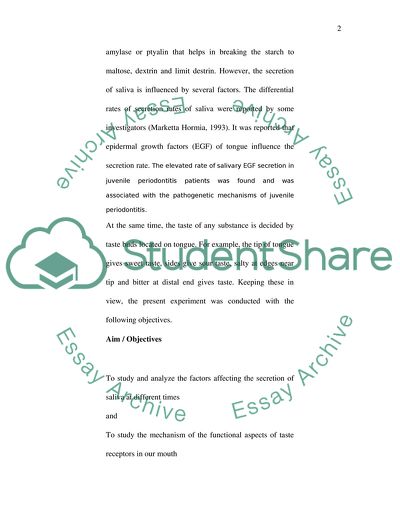Cite this document
(Salivary Secretion and Taste Lab Report Example | Topics and Well Written Essays - 1514 words, n.d.)
Salivary Secretion and Taste Lab Report Example | Topics and Well Written Essays - 1514 words. https://studentshare.org/biology/1710381-salivary-secretion-and-taste
Salivary Secretion and Taste Lab Report Example | Topics and Well Written Essays - 1514 words. https://studentshare.org/biology/1710381-salivary-secretion-and-taste
(Salivary Secretion and Taste Lab Report Example | Topics and Well Written Essays - 1514 Words)
Salivary Secretion and Taste Lab Report Example | Topics and Well Written Essays - 1514 Words. https://studentshare.org/biology/1710381-salivary-secretion-and-taste.
Salivary Secretion and Taste Lab Report Example | Topics and Well Written Essays - 1514 Words. https://studentshare.org/biology/1710381-salivary-secretion-and-taste.
“Salivary Secretion and Taste Lab Report Example | Topics and Well Written Essays - 1514 Words”. https://studentshare.org/biology/1710381-salivary-secretion-and-taste.


